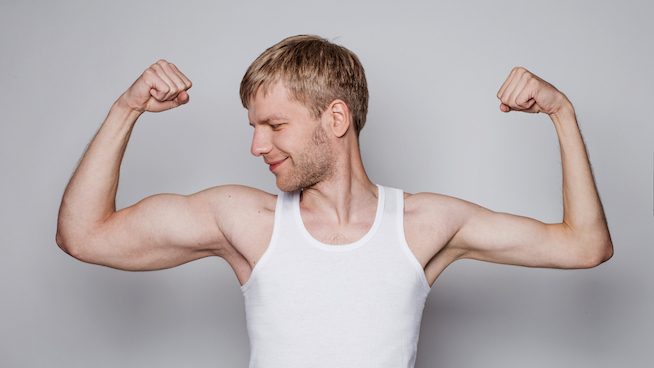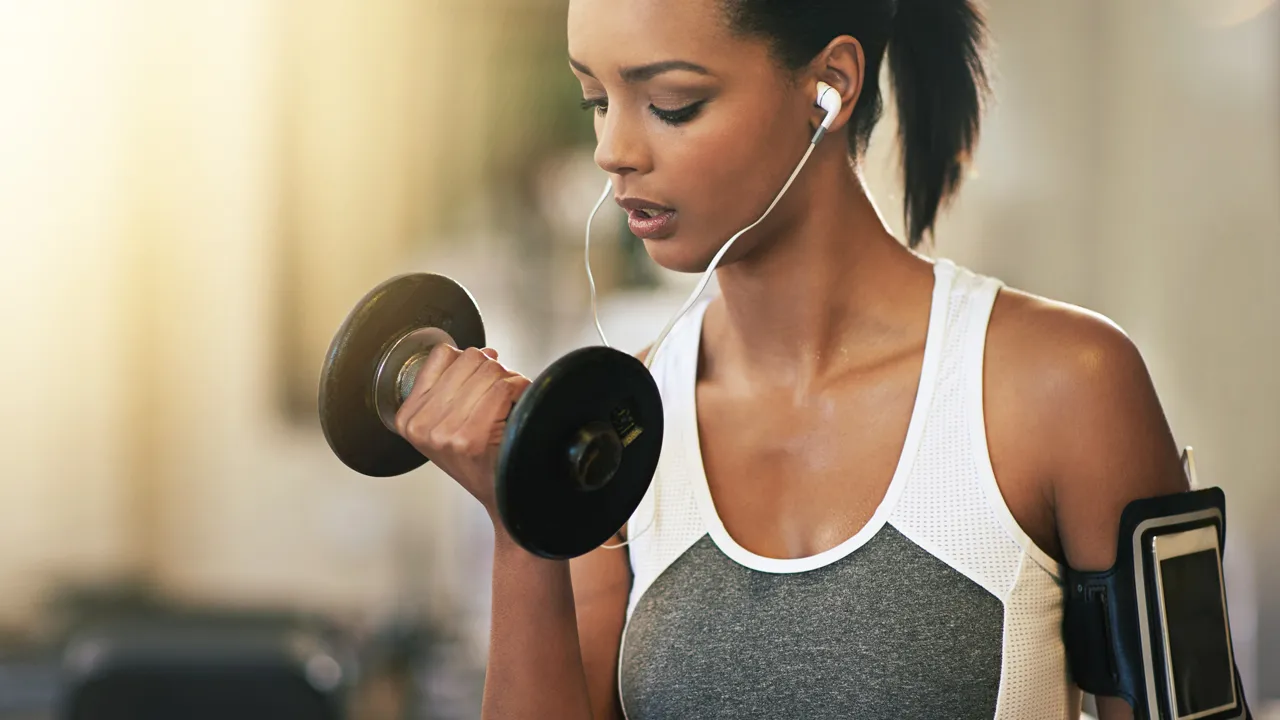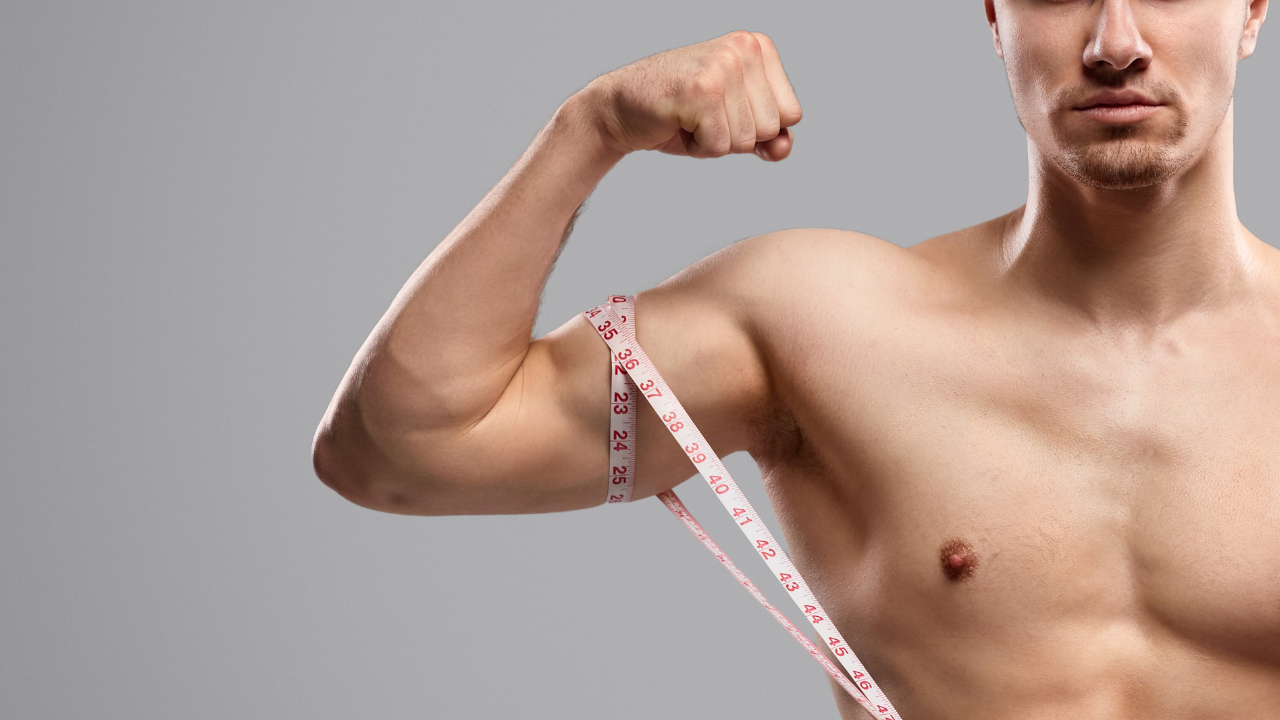Having one arm visibly larger or more muscular than the opposite arm is a common issue that many weightlifters and gym-goers experience. This noticeable muscle imbalance between limbs can be aesthetically frustrating and potentially lead to strength imbalances or injury risk if not addressed. This blog post explores the possible reasons that cause one arm to develop more muscle than the other, despite using the same weights and routines for both sides.

We’ll provide tips on adjusting your strength training program to help even out arm size and muscle development through targeted exercises and techniques.
Contents
Is it Normal for One Arm to be Bigger Than the Other?
Yes, it’s completely normal to have one arm slightly bigger than the other. Our bodies are naturally asymmetrical, and this applies to our muscles as well. You might notice this difference in muscle size due to various factors, but it’s not a cause for concern. Here’s why:

- Natural Asymmetry: Like other parts of our body, such as ears and legs, muscle asymmetry is common in both humans and animals.
- Attention to Detail: Bodybuilders may notice muscle imbalances more because they pay close attention to their physique. Spending time tracking progress can make differences more noticeable.
- Prominent Muscles: Muscles can be more visible than other body features, making any disparities in size more apparent.
- Preventable Factors: While some asymmetry is natural, other factors like imbalanced workouts or poor form can contribute to varying muscle size.
7 Things To Do If One Arm Is Bigger Than The Other
Below are seven things you can do to address size differences between your arms.
1. Focus on Unilateral Exercises
Unilateral exercises target one limb at a time, allowing you to address imbalances directly. By incorporating movements like single-arm curls or presses, you ensure each arm works independently, promoting equal strength and size development. This method prevents the dominant arm from taking over, facilitating more balanced muscle growth.
2. Begin Workouts with the Smaller Arm:
Starting your routine with the smaller or weaker arm forces it to work harder, pushing its limits before the dominant arm. This approach ensures the weaker arm receives the stimulation it needs for growth, as fatigue in the dominant arm won’t limit the exercise intensity for the smaller arm.
3. Maintain Equal Training Volume for Both Arms:
Equalizing training volume between arms is crucial. Ensure both arms perform the same number of sets and repetitions with similar intensity. This equality helps in gradually correcting size and strength disparities by providing the same growth stimulus to each arm.

4. Implement Corrective Exercises:
Incorporate exercises specifically designed to target the weaker or smaller arm’s underdeveloped areas. Corrective exercises help strengthen any lagging muscles and improve overall arm symmetry. Tailoring your workout to include these movements can expedite the balancing process.
5. Monitor and Adjust Grip and Form:
Proper technique is vital for balanced development. Incorrect form or grip can exacerbate imbalances by allowing the stronger arm to compensate. Pay close attention to your form, ensuring each arm engages correctly and equally during exercises to promote symmetrical growth.
6. Prioritize Nutrition and Recovery:
Muscle growth and recovery are heavily influenced by diet and rest. Ensuring adequate protein intake and sufficient rest between workouts supports muscle repair and growth. Balanced nutrition and recovery practices are fundamental in achieving equal arm development.
7. Seek Professional Advice:
If imbalances persist or if you’re unsure how to adjust your training regimen, consulting a fitness professional or physical therapist can provide personalized guidance. Experts can assess your situation, identify underlying causes, and recommend effective strategies to achieve symmetry.
Frequently Asked Questions
How do you fix arm muscle imbalance?
To fix arm muscle imbalance, focus on single-arm exercises with dumbbells to target each arm individually. Alternate reps between arms, avoid barbells, and incorporate isolation exercises like bicep curls and tricep extensions. Consistent training on the weaker arm is crucial for achieving symmetry.
How can I even out my arm size?
Even out arm size by using unilateral exercises to isolate each arm’s muscles. Swap barbell exercises for dumbbell exercises and include single-arm bicep exercises in your routine. Emphasize symmetry and balance in your training.
Should I worry about muscle imbalances?
Minor muscle imbalances are common and not a cause for concern. However, noticeable differences may require attention to prevent imbalances from worsening. Regularly monitor your progress and adjust your workouts accordingly.
How long does it take to fix muscle imbalance?
It may take several months to correct muscle imbalances through targeted exercises and training. Seek guidance from a healthcare provider or physical therapist for personalized recommendations based on your specific situation.
Why is one arm skinnier than the other?
Uneven arm size can be due to genetics, nerve distribution, past injuries, or anatomical variances. Focus on targeted exercises and training techniques to address the muscle size difference and promote balance in both arms.

Hello, I’m Ravindra. Over the years, I’ve immersed myself deeply into the world of fitness and health, transforming both my body and mind. Writing has allowed me to share my journey, insights, and expertise with those just starting out and seasoned fitness enthusiasts alike. Beyond just routines and diets, I believe in inspiring others to adopt a holistic approach to well-being.
